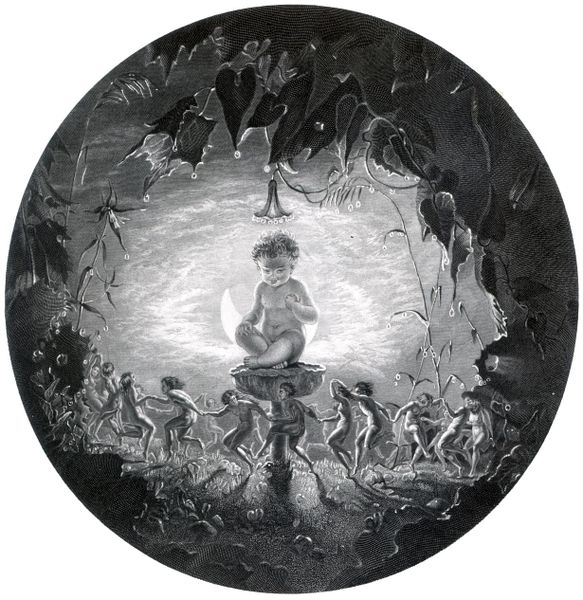Anthropology of Small Mythological Characters
July 11, 2011
Undoubtedly myths have some responsibility for how we define our relationship with the small. Mythical explanations of the world often present small beings as metaphors for the unexplainable. The small have become a space to project human desires, fears, ideals and ideas. Knowledge of this vast component of global mythology can be of some importance if we are to understand why we want, or do not want, to become smaller. This is a growing list of mythological small beings.
Yundi Tsundi: Cherokee legends speak of “Little People” or “Yundi Tsundi”. They are a race of 2 feet high elf-like beings who make their homes in forests and caves. Their hair is so long it almost touches the ground. They are very helpful, kind-hearted, but they like to play tricks. They help those that are lost. They can assume shapes and use magic. They are here to teach lessons about living in harmony with nature.
Dactyloi: According to Greek legend the Dactyls were the first metallurgists, iron toolmakers and healing magicians, and taught mathematics and the alphabet to humans. They also introduced competitive sports as at one point one dactyl organised a race between his four other brothers. They are the size of a finger (but this is the finger of a Goddess so perhaps it is not so small at all).
Goblin: A goblin is an evil or mischievous illiterate creature. They are attributed with various, sometimes conflicting, abilities, temperaments and appearances depending on the story and country of origin. They are usually depicted as small, sometimes only a few inches tall. They also often are said to possess various magical abilities.
Pygmaioi: The Pygmies were a tribe of diminutive humans in Greek mythology. Their name comes from pygmê, the length of the forearm. According to the Iliad, they were involved in a constant war with the cranes, which migrated in winter to their homeland. Another legend describes how the Pygmies encountered Heracles, and climbing all over the sleeping hero attempted to bind him down, but failed. The story was adapted by Jonathan Swift as a template for Lilliputians.
Dökkálfar (Dark Elves) and the Ljósálfar (Light Elves): In Norse mythology, Dökkálfar and Ljósálfar are two contrasting types of elves; the prior dwell within the earth and are most swarthy, while the latter live in heaven, and are “fairer than the sun to look at”. The Dökkálfar and the Ljósálfar are solely attested in the Prose Edda, written in the 13th century by Snorri Sturluson. Scholars have produced theories about the origin and implications of the dualistic concept.
Kabouter: In the folklore of the Low Countries, kabouters are tiny men who live underground or in mushrooms, or spirits who help in the home. The males have long, full beards (unlike dwarves, who do not always have full beards) and wear tall, pointed red hats. They are generally shy of humans. In some tales they have the ability to become invisible.
Gnome: A gnome is a diminutive spirit in Renaissance magic and alchemy, first introduced by Paracelsus. It is typically said to be a small, humanoid creature that lives underground. Paracelsus describes them as two hands high, very reluctant to interact with humans, and able to move through solid earth as easily as humans move through air.
Brownie: Brownies are mythical household spirits from English and Scottish folklore. It is a personage of small stature, wrinkled visage, covered with short curly brown hair, and wearing a brown mantle and hood. They are said to inhabit houses and aid in tasks around the house, like getting rid of spiders. They do not like to be seen and will only work at night, traditionally in exchange for small gifts of food.
[…] history, our imagination in myths, legends and fairy tales has envisioned a wide variety of small human creatures. It would be ignorant to dismiss these descriptions and visualisations as mere fantasies. From an […]